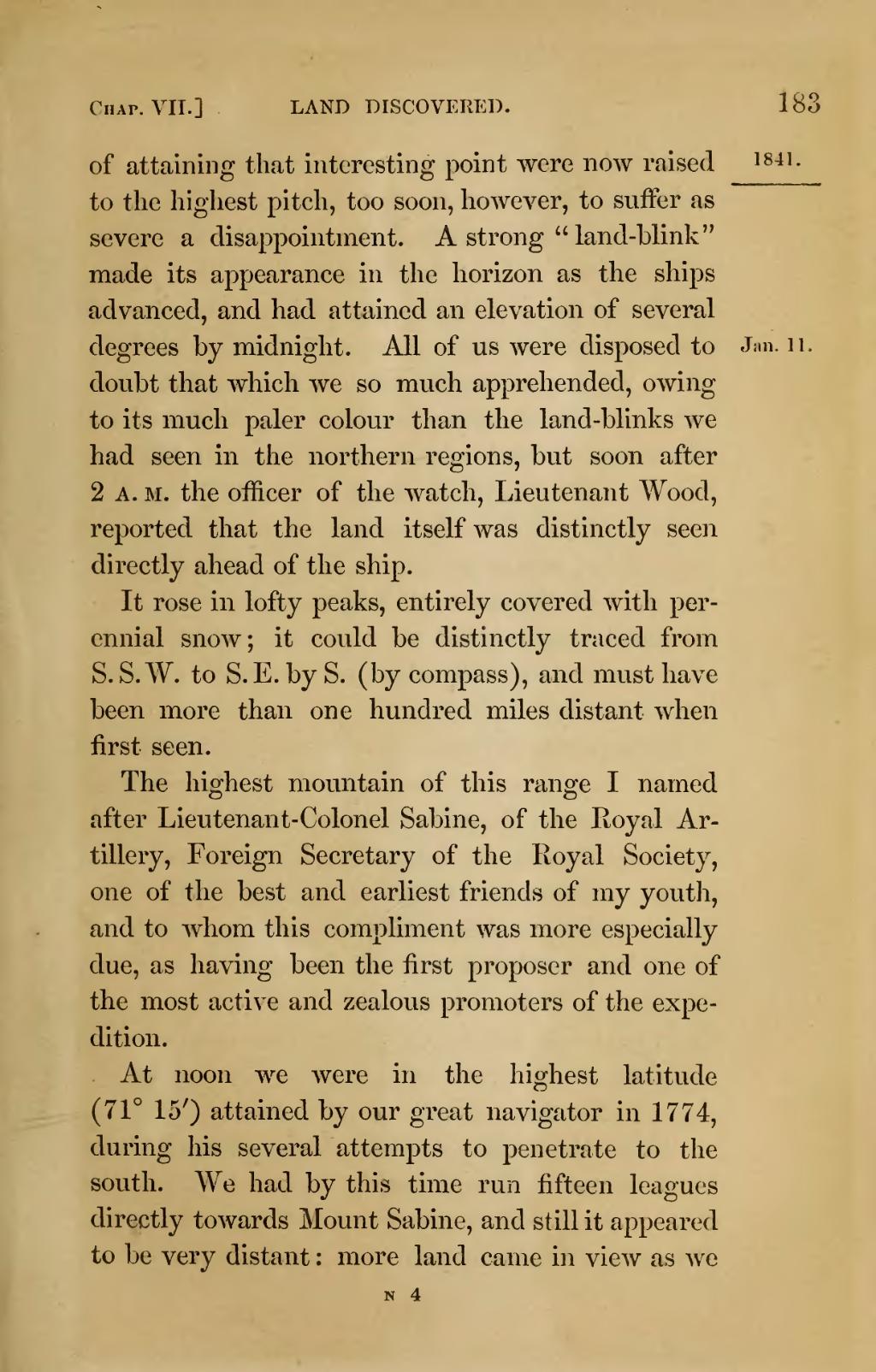of attaining that interesting point were now raised to the highest pitch, too soon, however, to suffer as severe a disappointment. A strong "land-blink" made its appearance in the horizon as the ships advanced, and had attained an elevation of several degrees by midnight. All of us were disposed to doubt that which we so much apprehended, owing to its much paler colour than the land-blinks we had seen in the northern regions, but soon after 2 a.m. the officer of the watch, Lieutenant Wood, reported that the land itself was distinctly seen directly ahead of the ship.
It rose in lofty peaks, entirely covered with perennial snow; it could be distinctly traced from S.S.W. to S.E. by S. (by compass), and must have been more than one hundred miles distant when first seen.
The highest mountain of this range I named after Lieutenant-Colonel Sabine, of the Royal Artillery, Foreign Secretary of the Royal Society, one of the best and earliest friends of my youth, and to whom this compliment was more especially due, as having been the first proposer and one of the most active and zealous promoters of the expedition.
At noon we were in the highest latitude (71° 15′) attained by our great navigator in 1774, during his several attempts to penetrate to the south. We had by this time run fifteen leagues directly towards Mount Sabine, and still it appeared to be very distant: more land came in view as we